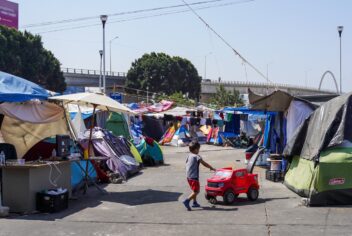Summer. For most people, this word conjures up images of pool parties, backyard barbecues and general fun in the sun. For many nonprofits, it means something much more important — fundraising season. Special events and fundraisers play a critical role in many nonprofits’ operations, as they raise awareness about vital causes and raise funds that often cover the cost of providing services. However, it’s important for any nonprofit hosting an event to remember that there are certain risks involved, and the summer season is no exception.
Imagine for a moment: it’s the Fourth of July weekend and your organization is throwing its annual summer fundraiser at a local public park. There’s live entertainment, kids swimming in the pool, lots of delicious food sizzling on the barbecue, festive sparklers – the whole shebang. The day of the event rolls around and the weather is gorgeous, set-up goes smoothly, and everyone seems to be having a great time! At this point, you’re probably thinking the event is a huge success and its smooth sailing from here – all crises averted. Unfortunately, things often go awry when you least expect it, and that’s exactly how this year’s summer fundraiser begins to unravel.
While one of your volunteers is prepping hot dogs for guests, a can of cooking spray is set down next to the grill. Before anyone notices the risk, the can explodes, launching metal shrapnel at several children and their parents standing nearby waiting for their food. Several guests have to be taken to the hospital for treatment. On the other side of the park, while a group of young kids are playing Marco-Polo in the pool, the volunteer watching over the pool steps away and a 6-year old boy nearly drowns and an ambulance is called.
Shortly thereafter, one of the entertainers performing an act with flaming swords accidentally loses control, launching a weapon into the audience and cutting two on-duty police officers across their cheeks.
As the day progresses, things seem to settle down from the hectic first part of the day. However, during dinnertime, an elderly woman walking back to her table slips on a piece of cheese dropped on the floor. She has to be taken home for a hip injury, which ends up requiring surgery.
At this point, you’re probably wondering: what else could possibly go wrong? Turns out one of your volunteer youth leaders gave a developmentally disabled teen client a firework, which they proceeded to light. The firework exploded while in the teen’s hands, causing numerous burn injuries.
This is all seems ridiculous, right? Every one of these examples is based on an actual claim submitted by a member of the Nonprofits Insurance Alliance Group. While the likelihood that all of these catastrophes will happen at one event is slim, the likelihood that any one disaster could happen is very real. What does that mean for you? Any one of these issues could happen and could potentially close your nonprofits’ doors, and more importantly injure one of your clients or guests. While there’s no way to know exactly what might come up, you need to consider certain possibilities and identify what measures you will take to mitigate any and all situations. Purchasing insurance is just one way to manage risks. Proper planning, which includes safety and emergency procedures, appropriate documentation, and adequate staffing and security can both mitigate risk and reduce insurance costs. Not planning ahead can have a huge impact on both your reputation and your ability to effectively continue your mission.





